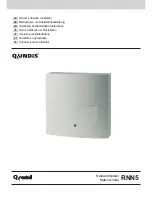
218
[PE2-vpn-instance-vpn1] vpn-target 1:1 2:2 3:3 import-extcommunity
[PE2-vpn-instance-vpn1] vpn-target 3:3 export-extcommunity
[PE2-vpn-instance-vpn1] quit
# Bind the interface connected with CE 2 to the created VPN instance.
[PE2] interface vlan-interface12
[PE2-Vlan-interface12] ip binding vpn-instance vpn1
[PE2-Vlan-interface12] ip address 20.0.0.1 8
[PE2-Vlan-interface12] quit
# Enable BGP on PE 2.
[PE2] bgp 600
# Configure IBGP peer 4.4.4.9 as a VPNv4 peer.
[PE2-bgp] peer 4.4.4.9 as-number 600
[PE2-bgp] peer 4.4.4.9 connect-interface loopback 0
[PE2-bgp] address-family vpnv4
[PE2-bgp-vpnv4] peer 4.4.4.9 enable
[PE2-bgp-vpnv4] quit
# Redistribute direct routes to the VPN routing table of
vpn1
.
[PE2-bgp] ip vpn-instance vpn1
[PE2-bgp-vpn1] address-family ipv4 unicast
[PE2-bgp-ipv4-vpn1] import-route direct
[PE2-bgp-ipv4-vpn1] quit
[PE2-bgp-vpn1] quit
[PE2-bgp] quit
Verifying the configuration
# Verify that PE 1 and PE 2 can ping each other.
[PE1] ping -a 30.0.0.1 -vpn-instance vpn1 20.0.0.1
Ping 20.0.0.1 (20.0.0.1) from 30.0.0.1: 56 data bytes, press CTRL_C to break
56 bytes from 20.0.0.1: icmp_seq=0 ttl=255 time=1.208 ms
56 bytes from 20.0.0.1: icmp_seq=1 ttl=255 time=0.867 ms
56 bytes from 20.0.0.1: icmp_seq=2 ttl=255 time=0.551 ms
56 bytes from 20.0.0.1: icmp_seq=3 ttl=255 time=0.566 ms
56 bytes from 20.0.0.1: icmp_seq=4 ttl=255 time=0.570 ms
--- Ping statistics for 20.0.0.1 ---
5 packet(s) transmitted, 5 packet(s) received, 0.0% packet loss
round-trip min/avg/max/std-dev = 0.551/0.752/1.208/0.257 ms
Configuring MPLS L3VPN inter-AS option C
Network requirements
Site 1 and Site 2 belong to the same VPN. Site 1 accesses the network through PE 1 in AS 100, and
Site 2 accesses the network through PE 2 in AS 600. PEs in the same AS run IS-IS.
PE 1 and ASBR-PE 1 exchange labeled IPv4 routes through IBGP. PE 2 and ASBR-PE 2 exchange
labeled IPv4 routes through IBGP. PE 1 and PE 2 exchange VPNv4 routes through MP-EBGP.
ASBR-PE 1 and ASBR-PE 2 use their respective routing policies and label routes received from
each other.
ASBR-PE 1 and ASBR-PE 2 use EBGP to exchange labeled IPv4 routes.
Содержание FlexNetwork 5510 HI Series
Страница 9: ...vii Remote support 460 Documentation feedback 460 Index 462 ...
Страница 318: ...309 Request list 0 Retransmit list 0 ...
Страница 363: ...354 Verify that CE 1 and CE 2 can ping each other Details not shown ...
Страница 446: ...437 The MCE has redistributed the OSPF routes of the two VPN instances into the EBGP routing tables of PE 1 ...
















































